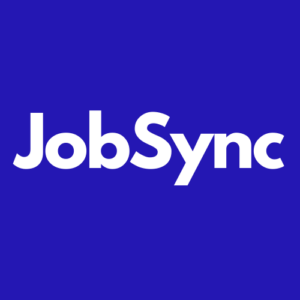
Have you ever been sucked into email instead of finishing an important report that could have a profound impact on the company or dropped everything to attend a hastily called meeting, even though it was merely a status update with no significant outcomes?
As most of us do, you probably suffer from urgency bias—the tendency to prioritize urgent tasks but not necessarily important ones. This cognitive bias places us in reactive mode instead of proactive and strategic. Since there are no immediate consequences to putting important—non-urgent tasks on hold, we tend to devote our precious time to tasks that we think require immediate attention, even if they are trivial by comparison.
In other words, time trumps importance in our minds.
We rarely discuss urgency bias in recruiting. Yet, it can explain why, despite our best intentions, we get so caught up in reducing time-to-hire that we fail to focus on finding the best talent for our organizations.
How Does Urgency Bias Show Up In Recruiting?
Urgency bias in hiring refers to recruiters’ and hiring managers’ tendency to prioritize filling a position quickly over finding the best candidate for the job. Finding the right candidate who meets the organization’s long-term needs comes second to the myopic focus on filling an open role.
In other words, while they may not be aware of it, time trumps quality in the recruiter’s mind.
If you’ve ever heard the mantra “hire fast, fire fast” — a staple in the tech startup world — you’ve seen urgency bias in action. According to this idea, the best thing a startup can do to staff their organization is to move quickly and decisively at the hiring stage, getting top candidates in the door before competitors while weeding out underperformers to rid the organization of dead weight.
While “hire fast, fire fast” may have some merit in the niche world of tech startups, it can be a dangerous mindset when applied to recruiting in general. That’s because it results in a series of defects in the hiring process, including:
- Hiring decisions made without thoroughly evaluating candidates’ qualifications, experience, or cultural fit.
- Ignoring potential red flags in a candidate’s background due to the pressure to hire quickly.
- Settling for someone available immediately rather than the most suitable person for the role.
- Skyrocketing turnover rates where ill-fitting hires become disengaged and leave or are terminated quickly for poor performance.
Why Are Recruiters So Vulnerable to Urgency Bias?
With all the processes and metrics that recruiters build around the quality of hire, it’s easy to assume that urgency bias is not a problem in the recruiting industry. In reality, several factors are colliding, which push recruiters to an even more extreme version of urgency bias than most of us experience in our day-to-day:
#1. Pressure from above
The business may be dealing with multiple departures, key deadlines, imminent projects, or seasonal spikes in hiring needs that require resources quickly. There’s a good chance that productivity will slump whenever there’s a gap in the team. The organization may even be losing revenue every day that a position sits vacant, especially if it’s a key role. The pressure to fill fast then trickles down to recruiters responsible for sourcing, screening, and presenting candidates to fill these roles.
#2. Candidate-driven job market
Candidates have their own interests to consider. They may be interviewing at multiple companies and ready to seize the first reasonable opportunity. If you want them, you must move fast so recruiters feel compelled to push the process forward quickly.
#3. Perceived or real talent scarcity
There’s also the issue of finding a skills and aptitude match for the position. If the team believes there is a shortage of qualified candidates, the temptation is high to hire the first “good enough” candidate – just to avoid losing them to competitors – instead of holding out for the right fit.
Even if there are enough qualified candidates but few have expressed interest, companies may select from the available candidates rather than making the adjustments needed to increase the overall pool of applicants.
#4. Metrics-focused culture
Recruiters are often evaluated based on the number of hires they make, how quickly they fill open positions, and other speed-based metrics (e.g., time to interview). This creates a sense of urgency to make fast hiring decisions to meet targets.
#5. Limited resources
Organizations with heavy workloads and limited talent acquisition resources might rush through hiring processes to manage workloads and other responsibilities. In these cases, hiring the first acceptable candidate is often seen as an efficient use of resources rather than a long-term strategic decision.
What’s the impact?
While urgency bias can help speed up the hiring time, it comes at the cost of quality of hire.
Shortcuts in the screening process, overlooking red flags in a candidate’s background or interview performance, making snap decisions instead of careful consideration — all these behaviors can lead to a lower quality of hire than if the recruiter had taken a more deliberate approach.
A rushed hiring process doesn’t do diversity any favors, either. Consciously or subconsciously, recruiters can fall back on candidate slates they are familiar with or those who are readily available, which can limit diversity and different viewpoints within the team.
Even worse? When you realize a candidate is a poor-quality hire, it’s already too late. The inefficiency of an employee who doesn’t meet the job requirements or has cultural fit issues, often isn’t apparent until it starts to affect the team’s functioning and productivity. Now, you need to decide: spend money, time, and effort you didn’t budget to train the underperformer and deal with the consequences of their shortcomings, or let them go and be back to square one in filling the position.
When you have bad hires, it’s almost inevitable that turnover rates will rise. The employee themselves will leave sooner rather than later, either because they realize the role is not what they thought or because their performance doesn’t meet expectations. In the worst-case scenario, you’ll enter the turnover doom spiral where other employees, fed up with constantly picking up the slack of an underperformer, start disengaging and leaving the team.
These repercussions can be significant and costly for an organization, resulting in:
- Increased costs: In addition to the financial cost of training and replacing a bad hire, there’s the opportunity cost in terms of time and energy expended on hiring someone who didn’t work out.
- Performance impact: Teams that are frequently disrupted by new hires who are not a good fit may suffer from lower overall performance, productivity, and engagement.
- Long-term degradation of employees: At some point, your lower-quality hires will be responsible for hiring and training your next set of employees. This can result in a vicious cycle where output is lowered with every new employee, which can be challenging to break.
- Reputation damage: Constant turnover and poor hiring decisions can seriously harm an organization’s reputation. Dissatisfied customers and employees do not hesitate to share their negative experiences publicly, which can impact a company’s reputation and future recruiting efforts.
How Do You Measure Urgency Bias in Hiring?
It’s one thing to believe that you have an urgency bias and another to prove it. As we have seen, the impact is often not felt immediately but as a slow burn with exponential consequences over time.
So, how can you measure the impact?
While no measurement is 100% accurate, two metrics can help determine if you have an urgency bias problem. First, measure your time to hire against your retention rates, cohorting your data by job type, experience needed, or importance to the business. Are there patterns? Is there a linear function between time and retention, or is it a bell curve where hiring too fast or too slow impacts your quality?
Then, look at your data through the lens of abundance: the number of applicants per hire versus your retention rate. Are you seeing lower retention rates when you have fewer applicants? That’s a sure sign that you are prioritizing speed over quality.
How Can Organizations Overcome Urgency Bias in Hiring?
So you’ve identified urgency bias as a problem in your recruiting function; what can you do about it? Here are some suggestions to help tackle this issue:
- Establish clear hiring and evaluation criteria with multiple checkpoints.
Define specific skills, experience, and cultural fit requirements for each role before initiating the hiring process, and make sure that different team members are involved in evaluating candidates against those criteria at various stages. This collective evaluation can provide a more balanced perspective on candidate suitability.
- Use standardized interview questions and scoring systems.
The last thing you want is to make rushed decisions based on initial impressions. Having some form of standardized system and grading forces you to slow down and consider each candidate more thoroughly.
- Make recruiters’ lives easier.
If recruiters have too much on their plates, they will look for shortcuts — it’s human nature. So, take the busy work away where you can. Technology such as automated interview scheduling and AI for writing job descriptions can remove many time-consuming manual processes while increasing candidate volume, leaving recruiters free to find the most qualified candidates more quickly.
- Remove application barriers.
With a 95% drop-off rate, many roles simply lack the ideal volume of applications from qualified candidates. Even if you have enough interested candidates, long or overly complicated application processes may put some off. Make it easy for candidates to apply, and you’ll see more good matches in your applicant pools.
- Use data to guide your decisions.
Implementing data-driven hiring practices and assessments can help ensure decisions are based on objective criteria rather than urgency — but make sure you’re measuring the right thing. An obsessive focus on time to hire will not fix an urgency bias problem, so focus on quality metrics instead. Hiring manager satisfaction ratings, retention rates, and performance ratings can all give you a more comprehensive view of your hiring process.
Can the Pendulum Swing Too Far?
Hiring decisions will always be influenced by three factors: speed, quality, and cost. The important thing is not to let the pendulum swing too far such that you lose sight of one factor.
While you’re reviewing your processes for signs of urgency bias, keep in mind that sometimes, speed will be the right priority. Prolonged vacancies can harm productivity and revenues, and the cost of leaving holes in your team may be higher than the cost of one bad hire.
A slowed-down hiring process can also frustrate candidates. If you take too long to make decisions, there’s a risk that top candidates will go with faster-moving competitors, so your goal is to always move at least as fast as the best of them without losing sight of quality. Bear in mind that the longer a role stays open, the more roles a recruiter may need to balance while finding hires. If they’re juggling too much, the urgency bias will likely creep back in.
Ultimately, it’s a trade-off between money now and money later. Investment into the top of the funnel may make the difference between having enough candidates to select the top-quality options at a healthy speed and delaying the hire with revenue impacts later. Data, as always, is critical to understanding the tradeoffs and ensuring you don’t lose sight of quality for speed.


